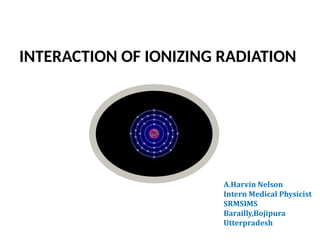The document discusses the interactions of ionizing radiation with matter, focusing on various mechanisms such as ionization, excitation, photoelectric effect, Compton effect, and pair production, detailing their mathematical descriptions and significance. It emphasizes the importance of the Compton effect in modern radiation therapy, its characteristics, and how different types of particles, including neutrons and electrons, interact with biological tissues. Finally, it highlights the challenges associated with using charged particles in therapy and concludes that photon beams remain the primary modality for treatment despite ongoing research.




































